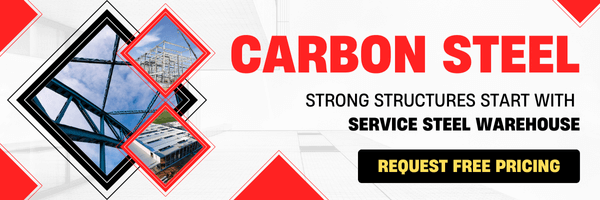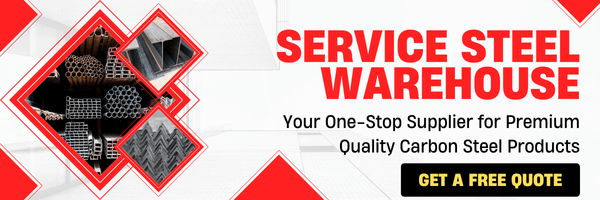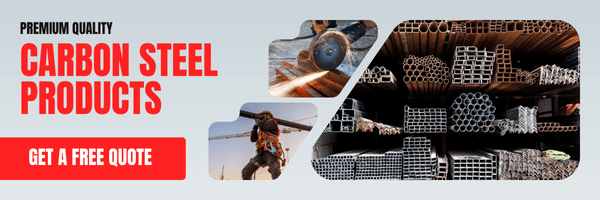Carbon Steel Guide: Uses, Properties, and More
November 14, 2024 | Categorized in: Types
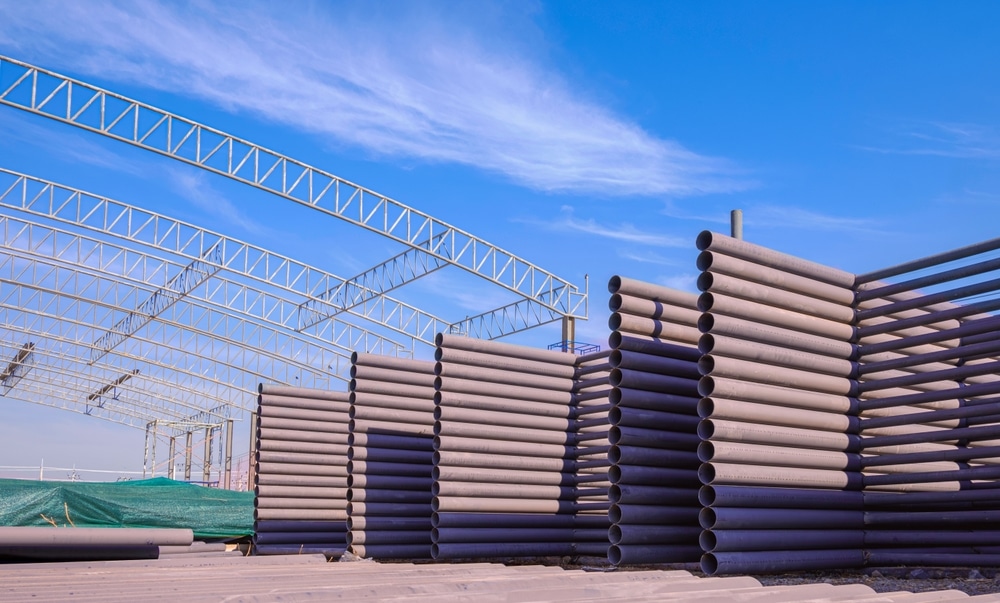
Carbon steel is a widely used and versatile metal, known for its strength and durability, making it a cornerstone in many industries. But for those unfamiliar with its properties or wondering about its suitability for specific applications, it can be confusing. Questions like “does carbon steel rust?” or “is carbon steel strong?” are all too common.
That’s why we’ve created this guide to carbon steel. In this resource we answer the biggest questions about carbon steel. Keep reading to learn more about how it’s made, and its various uses, so you’ll be equipped with the knowledge to make smart decisions about this essential metal.
Table of Contents:
What is Carbon Steel?
Carbon steel is a type of steel where carbon is the primary alloying element. Its composition ranges from low to high carbon content, which directly impacts its strength, flexibility, and hardness. As the carbon content increases, so does the steel’s strength and hardness. But there’s a trade-off as ductility and weldability often decrease. It’s this balancing act that makes carbon steel so fascinating but also so incredibly useful.
Another defining feature of carbon steel is that it contains minimal amounts of other alloying elements, such as chromium, nickel, or tungsten, making it distinctly different from other types of steel.
What is Carbon Steel Made of?
So know that you know what it is, it’s time to take a closer look at what carbon steel is made of. At its core, carbon steel is made from iron and carbon:
- Iron: Naturally occurring, this provides the base structure.
- Carbon: Ranges in content from 0.05% to 2.1% by weight.
But that’s not all… Carbon steel often contains trace amounts of other elements that can dramatically alter its properties:
- Manganese: Up to 1.65%, enhancing strength and hardness.
- Silicon: Usually less than 0.6%, aiding in deoxidation.
- Copper: Typically below 0.6%, improving corrosion resistance.
How is Carbon Steel Made?
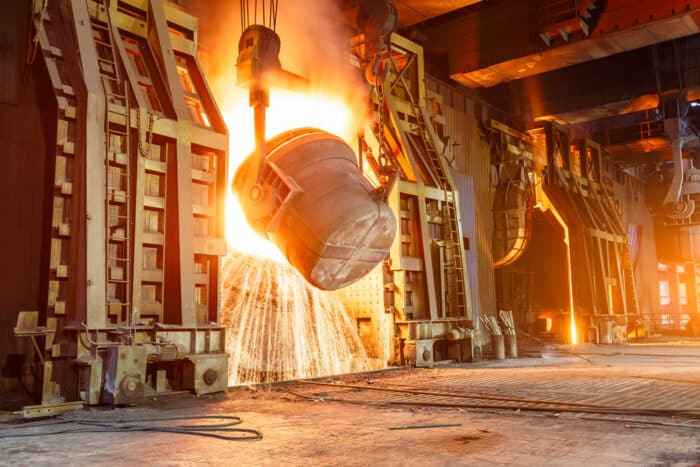
The creation of carbon steel is a fiery process, reminiscent of ancient alchemy but grounded in modern science. The process typically began in a blast furnace, where raw iron ore is melted and combined with coke (a carbon-rich material) and limestone. This process extracts impurities from the iron and adds the desired carbon content.
Once the molten iron and carbon are combined, the mixture is poured into molds to cool and solidify. Depending on the desired properties, carbon steel may undergo further processing, such as heat treatment or annealing, to improve its mechanical properties like strength or ductility.
These days, electric arc furnaces (EAF) have been widely adopted. Here, electricity arcs between electrodes, melt scrap steel and allow for more precise control over the final composition. It’s a process that combines brute force with surgical precision, resulting in steel tailored to specific needs.
Carbon Steel Types
There are four main types of carbon steel, each with its own characteristics suited for different applications:
|
Type |
Carbon Content |
Properties |
|
Low Carbon (Mild Steel) |
0.05% – 0.25% |
High ductility, excellent weldability |
|
Medium Carbon |
0.25% – 0.60% |
Increased strength, moderate ductility |
|
High Carbon |
0.60% – 1.25% |
High strength, low ductility |
|
Ultra-High Carbon |
1.25% – 2.1% |
Extreme hardness, very low ductility |
What is Carbon Steel Used For?
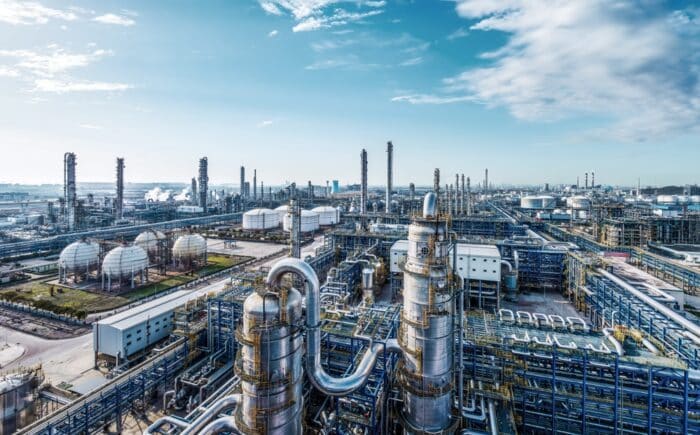
The versatility of carbon steel is showcased in its various types outlined in the table above. And each comes with unique properties that make it suitable for a variety of applications:
- Construction: Low carbon steel forms the skeleton of skyscrapers and bridges, providing strength without brittleness.
- Automotive: Medium carbon steel finds its way into crankshafts and axles, balancing strength with machinability.
- Tools: High carbon steel gives birth to hammers, wrenches, and cutting tools, where hardness is paramount.
- Kitchenware: From professional chef’s knives to humble frying pans, carbon steel brings durability to our culinary adventures.
- Heavy equipment: Gears, shafts, and other components benefit from carbon steel’s strength and wear resistance.
- Railways: Train wheels and tracks rely on medium carbon steel’s ability to withstand constant stress.
- Energy sector: Pipelines and pressure vessels in the oil and gas industry often utilize low carbon steel for its weldability and toughness.
Carbon Steel: FAQs
Does Carbon Steel Rust?
Yes, carbon steel rusts when exposed to moisture and oxygen. However, protective measures like galvanization, paint, and coatings, are quite effective in preventing corrosion. Alloying elements like copper can also enhance resistance, making carbon steel suitable for various applications despite its susceptibility to rust.
Is Carbon Steel Non-Toxic?
Carbon steel is non-toxic and safe for use in various industries, including food processing and cookware. Unlike some metals that may leach harmful chemicals when exposed to high heat or acidity, carbon steel remains stable. However, it’s essential to keep it well-maintained to prevent rust or contamination, especially in culinary applications.
Is Carbon Steel Strong?
Carbon steel is strong, with its strength increasing proportionally along with its carbon content. High carbon steel, containing 0.60% to 1.25% carbon, exhibits exceptional strength and hardness, making it ideal for applications requiring high wear resistance. Even low carbon steel, with its lower strength compared to high carbon variants, still offers significant structural integrity for many applications.
What is the Melting Point of Carbon Steel?
The melting point of carbon steel varies depending on its composition, but generally falls within the range of 2,500°F to 2,800°F. However, low to medium carbon steel typically melts at the higher end of this range, while high carbon steel has a slightly lower melting point due to its increased carbon content. We do want to point out that the “melting process” occurs over a range rather than at a single, fixed temperature, with the steel transitioning from solid to liquid state as it reaches its melting point.
Here to Supply Carbon Steel for Your Next Project
Whether you’re considering carbon steel for construction, machinery, or cookware, understanding its types, properties, and uses will help you select the best carbon steel for your needs. If you’re looking for a knowledgeable and experienced carbon steel supplier, Service Steel Warehouse is here to help!
We offer high-quality steel products including piling, beams, channels, pipes, sheets, and more. Not only do we have a wide inventory of products, but we also offer finishing services to process your order to your exact specifications, such as product sawing, galvanizing, and painting. If you’re unsure which service is right for your needs, talk to one of our steel professionals today.
